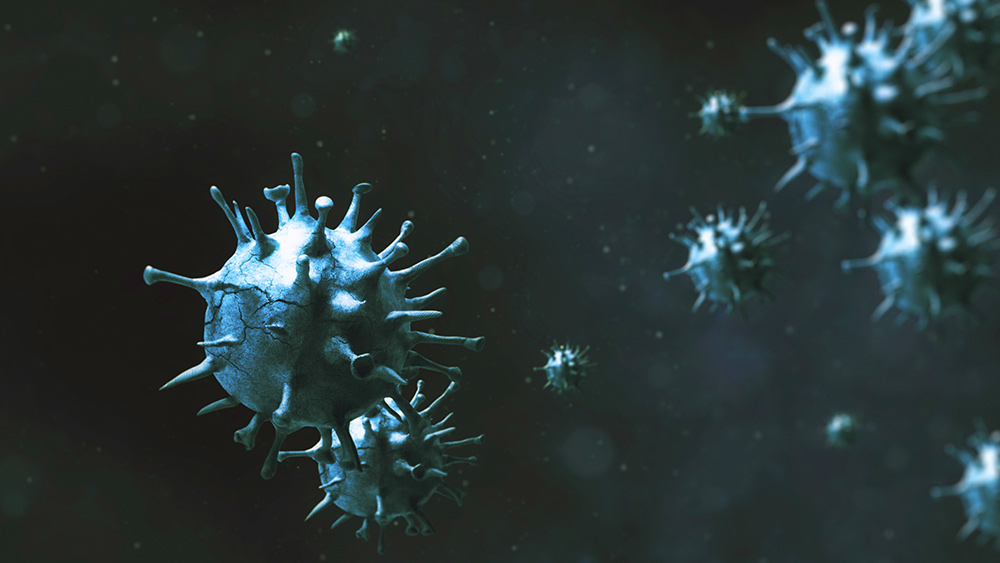Research reveals how plants evolved to colonize land more than 500 million years ago
03/15/2023 / By Zoey Sky

In a study, researchers from the University of Bristol and the University of Essex examined one of the largest genomic datasets of plants. Using the data, the research team was able to confirm how the first plants on Earth evolved the mechanisms used to control water and “breathe” on land hundreds of millions of years ago.
The study was published in the journal New Phytologist.
Their findings have important implications and can help experts understand how plant water transport systems have evolved.
For the last 500 million years, the evolution of land plants has supported the diversity of life on an increasingly green planet. Throughout their evolution, plants have acquired adaptations like leaves and roots, which have allowed them to control water and colonize land.
Some of these “tools” evolved in early land plants and can currently be found in both tiny mosses and giant trees which form complex forest ecosystems.
For the study, scientists from Essex’s School of Life Sciences and Bristol’s Schools of Biological Sciences and Geographical Sciences compared the genes of 532 plant species to learn more about the role of new and old genes in the genesis of these adaptations.
Next, the researchers focused on 218 genes that were related to major innovations in land plant evolution, like roots and vascular tissues. The research team found that some early traits crucial for land plants, like stomata, or the pores that plants use to “breath,”‘ are related to the origin of new genes.
Later innovations, like plant roots and the vascular system, “recycle” old genes that emerged in the ancestors of land plants and showed that different parts of plant anatomies, like roots, stomata and vascular tissue, involved in the transport of water were linked to different methods of gene evolution. (Related: Collapse in population of mammals and birds is now impairing the ability of plants to migrate via seed dispersal.)
Study sheds light on different methods of gene evolution in plants
Dr. Jordi Paps, the study’s joint lead author and senior lecturer from Bristol’s School of Biological Sciences, said the study helped them learn more about the “genetic basis of the greening of the planet.”
The findings also shed light on the different methods of gene evolution in the diversification of the plant kingdom.
Historically, experts did not have enough data to confirm if evolutionary innovations are driven by the emergence of new genes or by the repurposing of old ones.
The study showed how plants evolved at specific moments in their history and how various modes of evolution, along with the origin of new genes and the recycling of older genes, also had a role in the emergence of major innovations that were crucial to the greening of the planet.
Dr. Ulrike Bechtold, the study’s joint lead author and Senior Lecturer from Essex’s School of Life Sciences, added that the study “provides insights into the mechanistic changes underpinning water uptake and transport, which are important for plant health and productivity.”
The findings can help scientists select and investigate the function of old, repurposed and new genes in the lab. The data can also be used to select genes that reduce water use and improve drought resilience in crop plants, which may prove useful for modern agricultural practices.
According to Dr. Alexander Bowles, one of the study’s co-authors from Bristol’s School of Geographical Sciences, the study findings can help researchers “make sense of the past.”
Bowles also said that their work can help guide other researchers. By understanding how water transport systems have evolved, researchers can look into the limiting factors for plant growth. Bowles said this is crucial when considering the growth of crops and their resilience to drought.
Visit CensoredScience.com for more stories like this.
Watch the video below to find out how plants can be larks or night owls like humans.
This video is from the Sam Bass channel on Brighteon.com.
More related stories:
Marigolds possess a natural repellent against devastating pests.
New soil science study shows how plants release specific metabolites that enrich productivity.
Sources include:
Submit a correction >>
Tagged Under:
breakthrough, discoveries, diversity, Ecology, ecosystem, environment, gene evolution, genomic datasets, plant kingdom, Plants, real investigations, research, stomata
This article may contain statements that reflect the opinion of the author




















